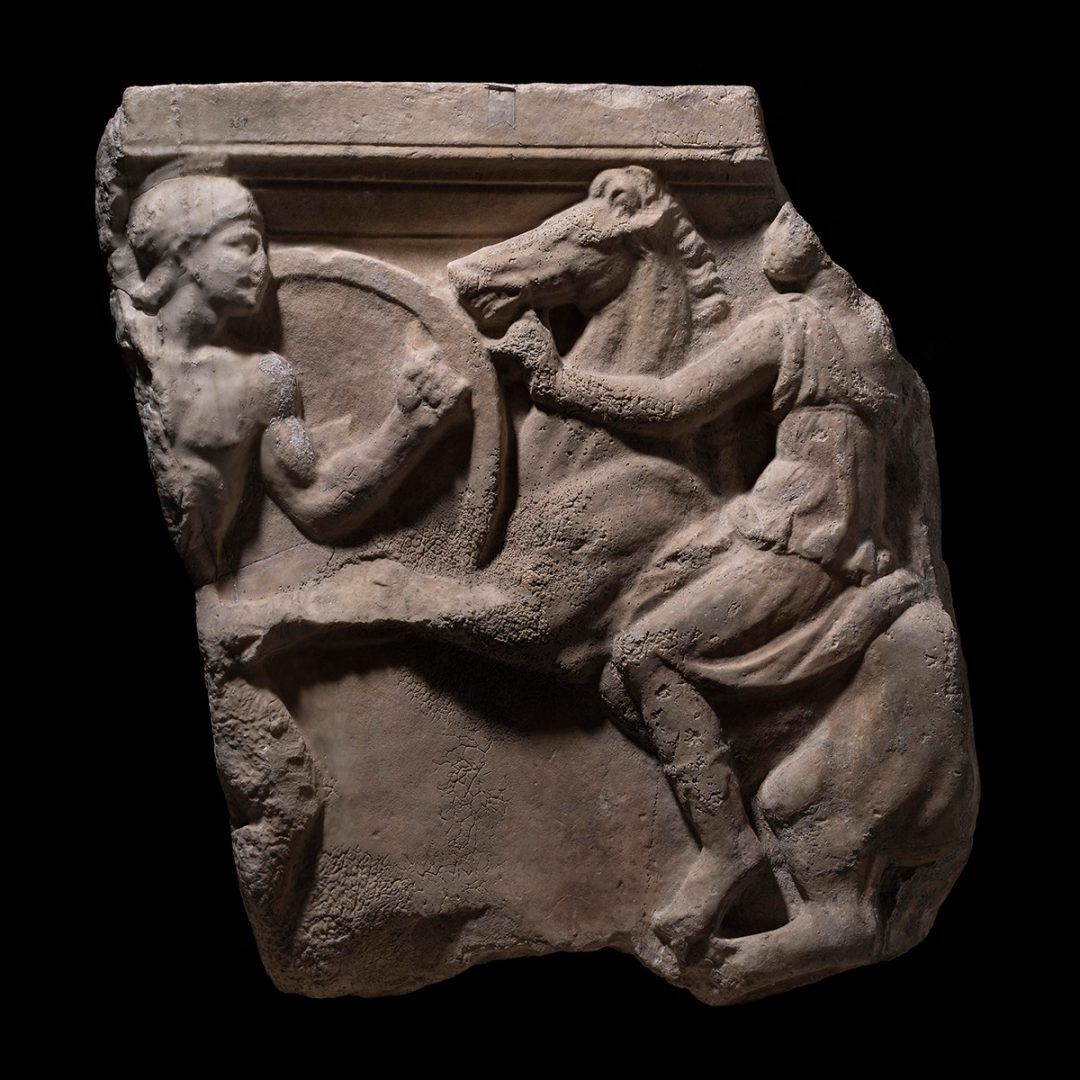Brave Amazon and muscular warrior
In March 2019, the National Museum of Antiquities purchased a marble relief from the time of the Roman emperors (AD 170-180) at the TEFAF art fair in Maastricht. It depicts a scene from the Amazonomachy, the mythical war between the ‘civilised’ Greeks and the ‘barbaric’ Amazons, a nation of ferocious women warriors. The image shows a fierce battle between an Amazon mounted on a rearing horse and a Greek warrior on foot. The relief was found in the 19th century in the sea off the coast of Piraeus, the port of Athens.
- The relief has been given a place of honour in the classical sculpture gallery and is displayed on the first floor of the museum.
The style recalls the reliefs of the Parthenon
The Amazonomachy was a popular theme in the art of both the Romans and the Greeks. It symbolised the struggle between the civilised world and barbaric violence. This relief fragment (86 x 87 x 16 cm) was probably once part of a large sarcophagus. It is sculpted in classical Greek style and is reminiscent of the reliefs of the Parthenon.
Brave and cruel Amazons
According to the myth, the Amazons were descendants of Ares, the god of war, and adored violence. The women were known as brave but cruel warriors. They lived in a separate community, without men. This way of life was seen as completely at odds with the ‘civilised’ world of the ancient Greeks, where men ruled the roost. The tensions between Greeks and Amazons erupted into open conflict when the Greek hero Heracles stole the precious golden girdle of Hippolyta, Queen of the Amazons. The Athenian prince Theseus, who took part in this expedition, fell in love with Hippolyta’s sister, Antiope. He abducted her and took her to Athens, unleashing a ferocious war between Athenians and Amazons.

Purchase and financial support
The museum was able to finance almost half of the purchase price of €260,000 from the annual contribution of the BankGiro Lottery. The other half was financed from the museum’s own resources and from private funds including the Eega van Asklepios and Elisabeth Huss Funds.